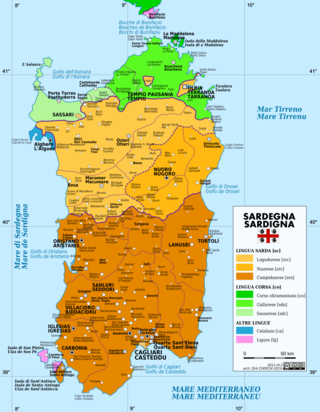
Gallurese is a Romance dialect of the Italo-Dalmatian family spoken in the region of Gallura, northeastern Sardinia. Gallurese is variously described as a distinct southern dialect of Corsican or transitional language of the dialect continuum between Corsican and Sardinian. "Gallurese International Day" takes place each year in Palau (Sardinia) with the participation of orators from other areas, including Corsica.
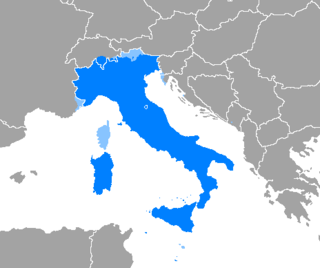
Italian is a Romance language of the Indo-European language family that evolved from the Vulgar Latin of the Roman Empire. Italian is the least divergent Romance language from Latin, together with Sardinian. Spoken by about 85 million people including 67 million native speakers (2024), Italian is an official language in Italy, San Marino, and Switzerland, and is the primary language of Vatican City. It has official minority status in Croatia and in some areas of Slovenian Istria.
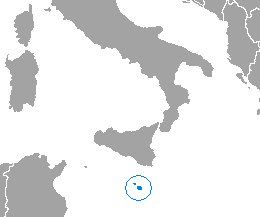
Maltese is a Semitic language derived from late medieval Sicilian Arabic with Romance superstrata spoken by the Maltese people. It is the national language of Malta and the only official Semitic and Afroasiatic language of the European Union. Maltese is a Latinised variety of spoken historical Arabic through its descent from Siculo-Arabic, which developed as a Maghrebi Arabic dialect in the Emirate of Sicily between 831 and 1091. As a result of the Norman invasion of Malta and the subsequent re-Christianization of the islands, Maltese evolved independently of Classical Arabic in a gradual process of latinisation. It is therefore exceptional as a variety of historical Arabic that has no diglossic relationship with Classical or Modern Standard Arabic. Maltese is thus classified separately from the 30 varieties constituting the modern Arabic macrolanguage. Maltese is also distinguished from Arabic and other Semitic languages since its morphology has been deeply influenced by Romance languages, namely Italian and Sicilian.

Sardinian or Sard is a Romance language spoken by the Sardinians on the Western Mediterranean island of Sardinia.

Sassarese is an Italo-Dalmatian language and transitional variety between Sardinian and Corsican. It is regarded as a Corso–Sardinian language because of Sassari's historic ties with Tuscany and geographical proximity to Corsica. Despite the robust Sardinian influences, it still keeps its Corsican roots, which closely relate it to Gallurese; the latter is linguistically considered a Corsican dialect despite its geographical location, although this claim is a matter of controversy. It has several similarities to the Italian language, and in particular to the old Italian dialects from Tuscany.

Campidanese Sardinian is one of the two written standards of the Sardinian language, which is often considered one of the most, if not the most conservative of all the Romance languages. The orthography is based on the spoken dialects of central southern Sardinia, identified by certain attributes which are not found, or found to a lesser degree, among the Sardinian dialects centered on the other written form, Logudorese. Its ISO 639-3 code is sro.
Vernacular is the ordinary, informal, spoken form of language, particularly when perceived as being of lower social status in contrast to standard language, which is more codified, institutional, literary, or formal. More narrowly, a particular variety of a language that meets the lower-status perception, and sometimes even carries social stigma, is also called a vernacular, vernacular dialect, nonstandard dialect, etc. and is typically its speakers' native variety. Despite any such stigma, modern linguistics regards all nonstandard dialects as full-fledged varieties of a language with their own consistent grammatical structure, sound system, body of vocabulary, etc.

Sicilian is a Romance language that is spoken on the island of Sicily and its satellite islands. It belongs to the broader Extreme Southern Italian language group.

The Lombard language belongs to the Gallo-Italic group within the Romance languages and is characterized by a Celtic linguistic substratum and a Lombardic linguistic superstratum and is a cluster of homogeneous dialects that are spoken by millions of speakers in Northern Italy and southern Switzerland, including most of Lombardy and some areas of the neighbouring regions, notably the far eastern side of Piedmont and the extreme western side of Trentino, and in Switzerland in the cantons of Ticino and Graubünden. The language is also spoken in Santa Catarina in Brazil by Lombard immigrants from the Province of Bergamo, in Italy.

Neapolitan is a Romance language of the Italo-Romance group spoken in Naples and most of continental Southern Italy. It is named after the Kingdom of Naples, which once covered most of the area, since the city of Naples was its capital. On 14 October 2008, a law by the Region of Campania stated that Neapolitan was to be protected.
Regional Italian is any regional variety of the Italian language.
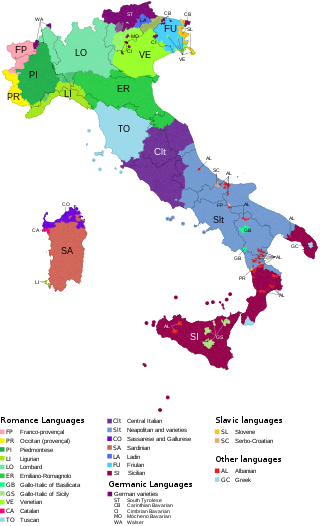
The languages of Italy include Italian, which serves as the country's national language, in its standard and regional forms, as well as numerous local and regional languages, most of which, like Italian, belong to the broader Romance group. The majority of languages often labeled as regional are distributed in a continuum across the regions' administrative boundaries, with speakers from one locale within a single region being typically aware of the features distinguishing their own variety from one of the other places nearby.
The primary languages of Calabria are the Italian language as well as regional varieties of Extreme Southern Italian and Neapolitan languages, all collectively known as Calabrian. In addition, there are speakers of the Arbëresh variety of Albanian, as well as Calabrian Greek speakers and pockets of Occitan.

Barossa German is a dialect of German, predominantly spoken in the Barossa Valley region of South Australia. The prominent South Australian writer, Colin Thiele (1920–2006), whose grandparents were German immigrants, referred to "Barossa-Deutsch" as: "that quaintly inbred and hybrid language evolved from a century of linguistic isolation". It takes its name from the Barossa Valley, where many German people settled during the 19th century. Some words from Barossa German have entered South Australian English.

Caribbean Hindustani is an Indo-Aryan language spoken by Indo-Caribbeans and the Indo-Caribbean diaspora. It is a koiné language mainly based on the Bhojpuri and Awadhi dialects. These Hindustani dialects were the most spoken dialects by the Indians who came as immigrants to the Caribbean from Colonial India as indentured laborers. It is closely related to Fiji Hindi and the Bhojpuri-Hindustani spoken in Mauritius and South Africa.

The Italian language in the Italian Switzerland or Swiss Italian is the variety of the Italian language taught in the Italian-speaking area of Switzerland. While this variety is mainly spoken in the canton of Ticino and in the southern part of Grisons, Italian is spoken natively in the whole country by about 700,000 people: Swiss Italians, Italian immigrants and Swiss citizens with Italian citizenship.
Emilian is a Gallo-Italic unstandardised language spoken in the historical region of Emilia, which is now in the western part of Emilia-Romagna, Northern Italy.

Giacomo Devoto was an Italian historical linguist and one of the greatest exponents of the twentieth century of the discipline. He was born in Genoa and died in Florence.
Aldo Duro was a Dalmatian Italian linguist and lexicographer. He worked for both the Accademia della Crusca and the Enciclopedia Italiana, of which he was director of the lexicography. Duro was also the director of the Italian Vocabulary.
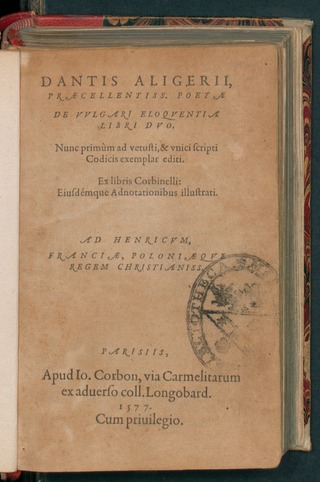
The Questione della lingua was a debate that emerged in late medieval and Renaissance Italy concerning the nature of the linguistic practice to be adopted in the written Italian language. Literary Italian developed in various forms in the 13th and 14th centuries. Unlike English and French, its development did not follow that of a national spoken language, since this emerged only after the Unification of Italy in 1860. Thus writers mostly had to acquire a knowledge of the written language by literary imitation, instead of drawing on their native speech. It was the lack of a national spoken language on which to base the language of literature that gave rise to the protracted and controversial debate about what the standard literary language should be.














